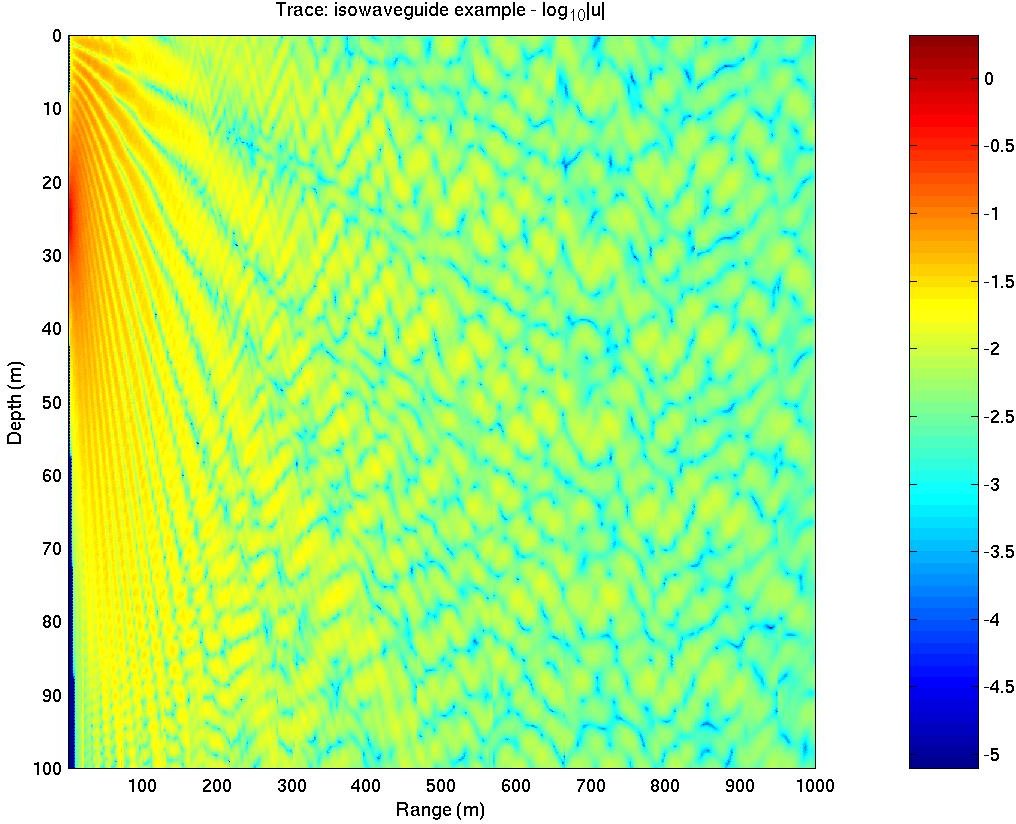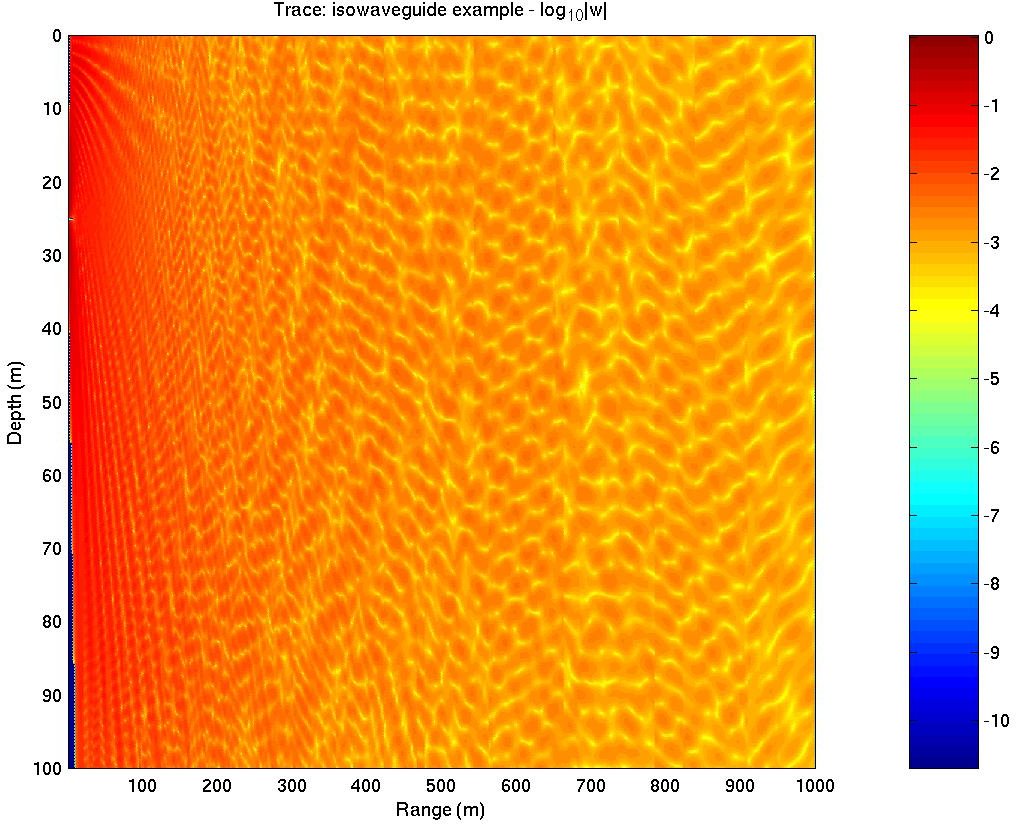![\includegraphics[height=80mm]{/home/orodrig/PDFdoc/2008/SiPLAB/Presentation/isowaveguide}](img92.png)
|
The WAVFIL containing the description of the environment (and named isowaveguide.wav ) looks like follows:
'TRACE - isovelocity waveguide' ------------------------------------------------ 1.000000 0.000000 25.000000 1500.000000 500.000000 'GMB' 51 -20.000000 20.000000 ------------------------------------------------ 'V' '2P' 2 0.000000e+00 0.000000 1.000000e+03 0.000000 ------------------------------------------------ 'c(z,z)' 'ISOV' 2 0.000000 1500.000000 100.000000 1500.000000 ------------------------------------------------ 'H' '2P' 'W' 1700.000000 1.700000 7.000000e-01 2 0.000000e+00 100.000000 1.000000e+03 100.000000 ------------------------------------------------ 'RCO' 'UAS' 1 1 1.000000e+03 1.000000e+02 75.000000 1.000000As shown by the option 'RCO' the WAVFIL indicates Trace to perform the calculation (only) of ray coordinates, making irrelevant the shape of the array (which contain only a single element), and the position of the hydrophone where eigenrays are to be calculated. Running 'runtrace isowaveguide' produces two output files, the first is the LOGFIL (named isowaveguide.log), which is written no matter what the output option is and looks like follows:
TRACE ray tracing program INPUT: waveguide file... TRACE - isovelocity waveguide OUTPUT: RAYFIL with ray coordinates... Boundary attenuation units: (dB/wavelength)... done. CPU time: 0.465928972 secondsand a RAYFIL (named isowaveguide.ray), which can be read with the M-file readrco.m and produces Fig.6.
Changing 'RCO' to 'ARI' and running the program takes slightly longer. This time the RAYFIL contains detailed information regarding every ray calculated by the model, specifically:
Changing 'ARI' to 'EIG' produces a RAYFIL, which contains only the eigenrays that connect the source and the receiver1. Reading the RAYFIL with the M-file readari.m produces Fig.7.
A present disadvantage of eigenray search resides in the fact that it can be performed at a single hydrophone only (the one located at the zeig depth). If required, travel time and amplitude data can be calculated at the receiving array by changing 'EIG' to 'AAD' and defining an array with the desired configuration. For simplicity the array chosen here coincides with the hydrophone used for eigenray calculations, so the Output Block looks like:
---------------------------------- 'AAD' 'UAS' 1 1 1.000000e+03 7.500000e+01 75.000000 1.000000(the last line, with the parameters zeig and miss is ignored by the program). Running the program produces an ARRFIL, which can be read with the M-file readaad.m and produces Fig.8. As expected from the symmetry between the source and the receiver the figure shows a system of quadruplet groups, with central arrivals overlapping in arrival time, producing triplets.
Acoustic pressure can be calculated at the array changing 'AAD' to 'CPR',
which can be used in Matched Field Processing.
Running the program produces an output file (named in this case as 'isowaveguide.press'),
which can be read with the M-file readpress.m.
However,
many acousticians prefer to look at transmission loss,
which can be calculated changing 'CPR' to 'CTL'.
The output file (named in this case as 'isowaveguide.tl'),
can be read with the M-file readtl.m (see Fig.9).
In order to obtain a detailed structure of interference the calculations were performed with an array of
501![]() 501 elements,
so the Output Block was looking like:
501 elements,
so the Output Block was looking like:
---------------------------------- 'CTL' 'UAS' 501 501 0.000000e+00 2.000000e+00 4.000000e+00 .... 1.000000e+03 0.000000e+00 2.000000e-01 4.000000e-01 .... 1.000000e+02 75.000000 1.000000
Changing 'CTL' to 'PVL' allows to illustrate the last option used by the programs, which allows to calculate the particle velocity (see Fig.10 and Fig.11). Such calculations are expected to be of interested in the modeling of vector sensor arrays.


|